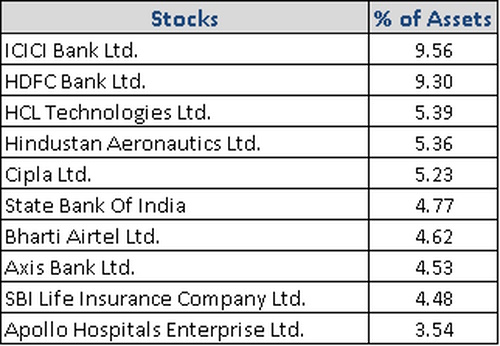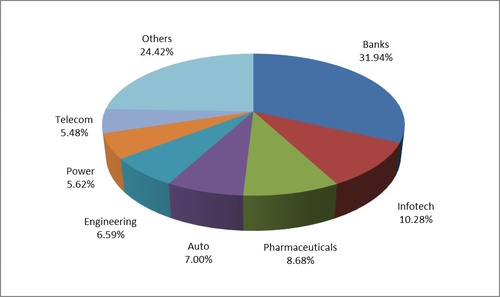Welcome to PersonalFN’s weekly analysis on diversified equity mutual funds! In this issue, we have analysed HDFC ELSS Tax Saver Fund, highlighting its performance, peer comparison, investment strategy, fundamentals, portfolio, and suitability.
HDFC ELSS Tax Saver Fund is a high-conviction-driven ELSS that has staged a remarkable comeback in the past few years after witnessing a prolonged period of subdued growth. The fund focuses on realising the long-term potential of fundamentally sound stocks available at appealing valuations.
What is the growth of Rs 10,000 invested in HDFC ELSS Tax Saver Fund five years ago?

Past performance is not an indicator of future returns
Data as of February 20, 2024
(Source: ACE MF, data collated by PersonalFN)
HDFC ELSS Tax Saver Fund holds the distinction of being one of the earliest schemes in the ELSS category. Launched in March 1996, HDFC ELSS Tax Saver Fund boasts an impressive long-term performance record of nearly 28 years and has generated a remarkable CAGR of about 23.7% since inception. The fund adopts a combination of growth and value-oriented investment strategies and avoids investing in momentum-driven tactical bets, even if it results in short-term underperformance. It also emphasises on picking high-potential stocks available at appealing valuations that could provide a reasonable margin of safety.
It is noteworthy that the journey of the fund has not been without glitches as the fund occasionally faced bouts of underperformance as well as frequent changes in the fund management team over the last few years. Due to its value-oriented investment approach, the fund faced a challenging phase in 2015 and then between 2018 and 2021, wherein it struggled to outpace the benchmark Nifty 500 – TRI and several of its growth peers.
[Read: Tax Saving Mutual Funds: Who Should Invest, How to Invest, and the Best Ones to Invest]
Nonetheless, the fund exhibited a significant improvement from 2021 onwards as its investment strategy of adherence to high-conviction long-term bets proved worthwhile. It has been successful in positioning the portfolio to benefit from the recent broad-based rally in the equity market. With improvement in performance track, it now stands among the top performers in the ELSS category across short to medium-term time frames.
In the last five years, HDFC ELSS Tax Saver Fund has grown at a CAGR of about 20.1% while the benchmark Nifty 500 – TRI appreciated at 19.3% CAGR. An investment of Rs 10,000 in HDFC ELSS Tax Saver Fund five years back would have now appreciated to Rs 25,015 compared to a valuation of Rs 24,199 for a simultaneous investment in its benchmark.
How has HDFC ELSS Tax Saver Fund performed on a rolling return basis?
| Scheme Name | Corpus (Cr.) | 1 Year | 2 Year | 3 Year | 5 Year | 7 Year | Std Dev | Sharpe |
| Quant ELSS Tax Saver Fund | 7,238 | 18.72 | 18.07 | 39.52 | 26.30 | 22.88 | 18.51 | 0.41 |
| Bandhan ELSS Tax Saver Fund | 5,976 | 20.27 | 15.30 | 31.47 | 17.06 | 17.87 | 14.75 | 0.35 |
| HDFC ELSS Tax Saver Fund | 13,441 | 22.70 | 18.25 | 27.33 | 13.76 | 13.84 | 13.26 | 0.40 |
| SBI Long Term Equity Fund | 20,085 | 27.26 | 17.25 | 27.15 | 16.11 | 14.60 | 14.31 | 0.38 |
| Parag Parikh ELSS Tax Saver Fund | 2,761 | 19.79 | 16.44 | 27.12 | — | — | 11.11 | 0.43 |
| Franklin India ELSS Tax Saver Fund | 6,033 | 20.27 | 13.83 | 26.70 | 14.35 | 13.75 | 14.69 | 0.31 |
| Bank of India ELSS Tax Saver | 1,090 | 21.87 | 12.74 | 26.53 | 18.62 | 18.62 | 15.63 | 0.33 |
| Mahindra Manulife ELSS Tax Saver Fund | 781 | 18.35 | 13.37 | 26.41 | 15.47 | 14.70 | 14.33 | 0.30 |
| Nippon India ELSS Tax Saver Fund | 14,166 | 17.91 | 13.18 | 26.03 | 10.83 | 10.62 | 14.65 | 0.31 |
| PGIM India ELSS Tax Saver Fund | 634 | 15.49 | 13.00 | 25.77 | 15.92 | 15.90 | 13.19 | 0.28 |
| Nifty 500 – TRI | 15.70 | 11.10 | 23.22 | 14.17 | 14.70 | 14.50 | 0.26 |
The securities quoted are for illustration only and are not recommendatory.
Returns are on a rolling basis and in %. Direct Plan-Growth option. Those depicted over 1-Yr are compounded annualised.
Data as of February 20, 2024
(Source: ACE MF, data collated by PersonalFN)
Please note, this table only represents the best-performing funds based solely on past returns and is NOT a recommendation. Mutual Fund investments are subject to market risks. Read all scheme-related documents carefully before investing. Past performance is not an indicator for future returns. The percentage returns shown are only for indicative purposes.
HDFC ELSS Tax Saver Fund’s near-term performance record is encouraging. After witnessing an extended phase of sub-par growth, HDFC ELSS Tax Saver Fund has managed to bounce back with sharp gains in the last few years. In the last two years, the fund delivered a CAGR of around 18.3% on a rolling return basis, thereby outperforming the benchmark and the category average by a remarkable margin of around 6% to 7% CAGR.
The fund now stands among the top quartile performers in the category across short to medium-term time frames and has also generated noticeable alpha over the benchmark. Over the longer 5-year and 7-year periods, the fund still slightly trails the category average and the benchmark on a rolling return basis but it has the potential to keep improving its performance and reward investors for their patience.
The volatility registered by the fund is one of the lowest in the category and much lower than the benchmark. Moreover, HDFC ELSS Tax Saver Fund has compensated its investors well by recording higher risk-adjusted returns, as denoted by its higher Sharpe ratio of 0.40 which is currently among the best in the category.
[Read: Best ELSS Mutual Funds: HDFC ELSS Tax Saver Fund vs Quant ELSS Tax Saver Fund]
What is the investment strategy of HDFC ELSS Tax Saver Fund?
Categorised as an ELSS, HDFC ELSS Tax Saver Fund is mandated to invest at least 80% of its assets in Indian equities. It has the flexibility to invest without any market cap or sector restriction. Accordingly, it aims to create a diversified portfolio spread across major industries, economic sectors, and market capitalisation that offers an acceptable risk-reward balance. HDFC ELSS Tax Saver Fund follows a blend of growth and value styles of investing to generate optimal returns.
The scheme predominantly invests in companies with strong growth drivers in the medium to long term, especially those which are competitively placed in an industry with good prospects. It emphasises on companies having strong management with an ability to capitalise on opportunities while managing risks. HDFC ELSS Tax Saver Fund also considers its track record of corporate governance, ESG sensitivity, and transparency.
HDFC ELSS Tax Saver Fund maintains a large-cap-biased portfolio wherein it invests 80-85% of its assets, with the remaining in mid-cap and small-cap stocks. The fund has high conviction in most of its stocks and holds them with a long-term view. Accordingly, HDFC ELSS Tax Saver Fund has recorded a low turnover ratio of about 15-35% in the last one year.
What are the top portfolio holdings in HDFC ELSS Tax Saver Fund?
 |  |
Holding in (%) as of January 31, 2024
(Source: ACE MF, data collated by PersonalFN)
HDFC ELSS Tax Saver Fund usually holds about 35 to 40 stocks spread across market caps and sectors. As of January 31, 2024, the fund held a compact portfolio of 41 stocks with the top 10 stocks accounting for around 56.8% of its assets. Large-cap names such as ICICI Bank, HDFC Bank, HCL Technologies, Hindustan Aeronautics, and Cipla currently form part of its top holdings. SBI, Bharti Airtel, Axis Bank, SBI Life Insurance Company, and Apollo Hospitals Enterprise are among the other stocks that form part of the fund’s top 10 holdings. Most of these stocks have been part of the fund’s core holdings for over 2 years now.
In the last two years, HDFC ELSS Tax Saver Fund benefitted the most from its exposure to Hindustan Aeronautics, NTPC, Bharti Airtel, ICICI Bank, and L&T that together contributed around 18% to its absolute gains. Mahindra & Mahindra, Cipla, Bajaj Auto, Axis Bank, Dr Reddy’s and Laboratories were among other stocks that contributed to its gains.
While HDFC ELSS Tax Saver Fund’s portfolio has higher allocation to cyclical, it also holds significant exposure to defensive and sensitive sectors. The fund’s portfolio is skewed towards Banking & Finance stocks that collectively form around 36.5% of its assets. It holds substantial allocations in Infotech, Pharma, Auto, and Engineering that form another 32.5% of its assets. The fund also holds diversification to Power, Telecom, Healthcare, and Construction, among others.
Is HDFC ELSS Tax Saver Fund suitable for my investment goals and risk tolerance?
After witnessing a pro-longed subdued growth phase, HDFC ELSS Tax Saver Fund has demonstrated a remarkable turnaround performance over the past few years, reclaiming its position among the top performers in the ELSS category. The fund maintains a large-cap biased portfolio which can enable it to generate stable returns across market phases. Notably, the fund’s performance may be in sharp contrast to schemes that hold higher exposure to stocks in the mid-cap and small-cap segments.
Owing to its high-conviction and value-oriented approach, HDFC ELSS Tax Saver Fund may encounter phases of underperformance in the short to medium term, particularly when its prominent bets are out of favour, or during market upswings driven by momentum. Nevertheless, its commitment to maintaining a portfolio of fundamentally sound high-conviction stocks along with diversification across industries positions it to potentially recover with superior gains. Notably, the fund has established a dependable track record of delivering reasonable risk-adjusted returns over longer time frames.
HDFC ELSS Tax Saver Fund is suitable for investors looking for an ELSS that focuses on picking high-conviction stocks, predominantly in the large-cap space, with an investment horizon of at least 5 to 7 years.
Watch this video to check out the 4 best ELSS to invest in 2024:
Note: This write up is for information purpose and does not constitute any kind of investment advice or a recommendation to Buy / Hold / Sell a fund. Returns mentioned herein are in no way a guarantee or promise of future returns. As an investor, you need to pick the right fund to meet your financial goals. If you are not sure about your risk appetite, do consult your investment consultant/advisor. Mutual Fund Investments are subject to market risks, read all scheme related documents carefully.
This article first appeared on PersonalFN here




